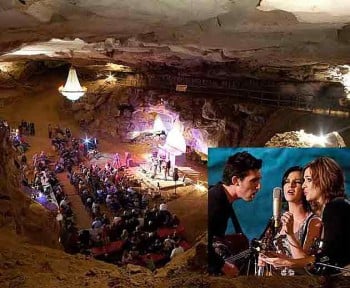Tag: Music
WUNC to end its music stream and HD2 service
Radio listening trends and economics are too challenging to justify acquiring a terrestrial signal for the Triple A music service, says GM ...How Cheryl Devall looks to build on ‘beautiful structure’ of KRVS
“I love that we don’t sound like any other NPR affiliate,” says Devall, a former NPR journalist who began managing the station ...How a composer’s accidental career builds on the legacy of ‘Sesame Street’
“I just never thought this was my thing and so I sort of fell into it," says music director Bill Sherman. "But ...WHRO acquires oldies station with ‘passionate’ following
With a signal boost and rebranding of WFOS as the Time Machine Radio Network, WHRO aims to reach a new audience of ...The Current launches 24/7 Prince-themed stream
The stream will highlight “the roots and fruits of the Purple Family Tree.”California’s KCSN and KSBR partner to grow audience
The new collaboration aims to solve a signal interference issue between the two stations.Tennessee station switches to Americana format
WMOT partners with Music City Roots for the new format.How to pick theme music for your show, and how not to
The art of radio and TV theme music and how to improve it.WDET apologizes for fundraising spots simulating tape decay
Detroit’s WDET admitted in an August letter to donors that it used suspect advertising tactics in on-air fundraising spots promoting an ambitious ...Vaults of Austin City Limits move to Cleveland’s Rock and Roll Hall of Fame
Producers of Austin City Limits have recorded more than 800 performances of the PBS rock music series during the past 37 years, but there ...Pledge Pipeline 2012-13
Current’s Pledge Pipeline previews 17 shows heading to public TV on-air membership drives in December 2012 and March 2013.Pubradio, artists pair up to promote music radio
Public radio stations and NPR are promoting April as Public Radio Music Month, a campaign designed to raise awareness of the cultural ...Gerald Poulsen, a.k.a. WAMU bluegrass host Jerry Gray, dies at 78
Gerald Poulsen, known in radio as bluegrass music host Jerry Gray, died Feb. 2 in Roanoke, Va. He was 78. His son ...Face-to-face: a place for trying new things, delighting new audiences
At a time when many radio programmers are experimenting with Internet-based media, it may seem unusual for a station to take on ...Back below the hills of Tennessee
The television version of Bluegrass Underground, now distributed in high-def and Surround Sound by PBS Plus, permits the audience to appreciate more vividly the ...










